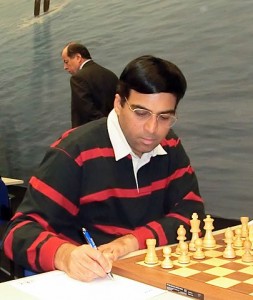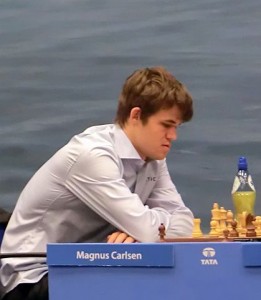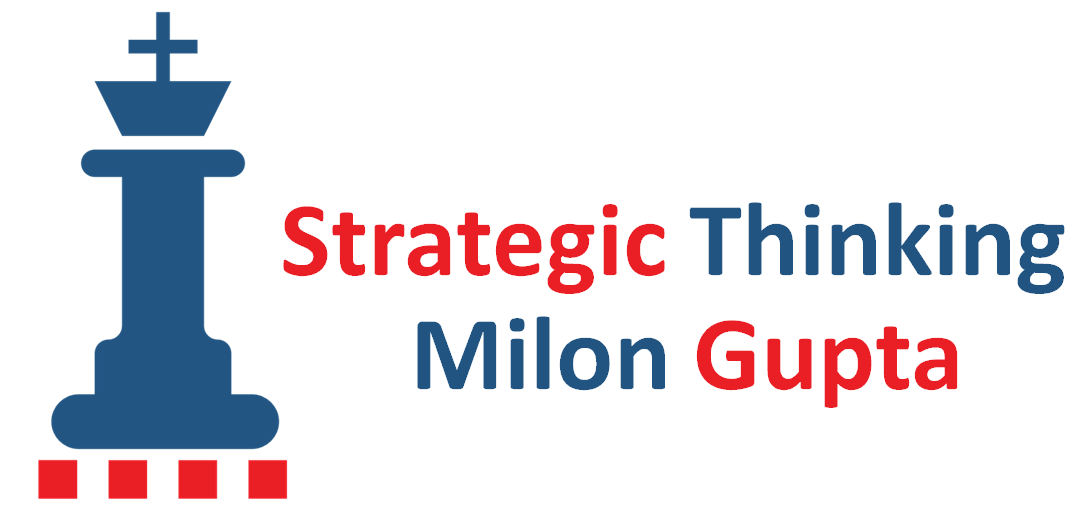The game of chess is a model for strategic thinking and decision making under highly competitive conditions. Understanding how the world´s top chess players achieve success can give executives valuable insights on how to improve their own strategic thinking and decision making.
What executives can learn from Anand versus Carlsen

The World Chess Championship in Chennai, India, in November 2013 offered a particularly interesting opportunity for studying two of the world´s leading strategic thinkers and their struggle to win. The match between Viswanathan Anand, the 43-year-old defending champion from India, and Magnus Carlsen, the 22-year-old challenger from Norway, offered insights beyond the boundaries of the 64 squares of the chessboard, which can have also significance for strategic decision-making at the boardroom.

At the end the score was 6.5 : 3.5 for the young challenger from Norway who became the new word champion.
This result did not come as a surprise to the chess world, as Carlsen went into the match as the favourite, due to the fact that he has been the top-ranked player in the world for the last three years, while Anand is only ranked no. 8 in the rating list of the world chess organisation FIDE. The difference in their Elo rating – something like the stock price for chess players – is almost 100 points (Carlsen: 2870; Anand: 2775).
So, what is it, then, that executives can learn from Anand and Carlsen? And what are the factors that have given Carlsen the competitive edge so far, which could be related to success factors in business?
Competitive advantage in chess and business
Let us first have a look at the similarities and differences of what constitutes competitive advantage in chess and business. In chess, the advantage is mainly based on the player´s superior knowledge and thinking skills. Otherwise, starting conditions before any match are at first sight the same: both players have the same number of chess pieces on the chessboard and the same time on the chess clock.
In business starting conditions may be very different between competitors. Established companies may have more capital and more employees, while start-ups usually have much less capital and employess, but often an edge in terms of innovativeness and flexibility.
However, even in business, good strategic decisions are ultimately at the root of a sustained competitive advantage. This is increasingly important in a business environment that is characterised by knowledge-driven innovation, rapid technological change, and a high level of uncertainty. So the qualities that made Anand and Carlsen successful in their domain, superior knowledge and thinking skills, are also increasingly important in a global business environment.
Like in chess, where you can make 40 good moves, but loose due to one single bad move, single strategic and operational errors can also have severe consequences in a highly competitive global business environment.
Factors of superior knowledge and thinking skills
The interesting question that follow is how you can acquire superior knowledge and thinking skills. In the cases of Carlsen and Anand as well as any other top chess players it is a combination of talent, practice, persistence and ambition. You need a high score for all of these factors to get to the top in Chess. If only one factor is missing, you will not make it. Even if you have plenty of talent, practice, persistence and ambition, it does not guarantee that you will play for the world championship.
Sometimes you also need the right opportunity and constellation at the right time. Some people may call it luck, but luck alone will not get you to the top, if you lack any of the other factors. You could say that Carlsen was lucky that Anand played a bad move in each of the games 5 and 6 that led to a win for Carlsen. However, in order to get a player of Anand´s experience and skill so heavily under pressure that he makes a mistake, you need to make excellent decisions move after move.
Transferring this insight to business, you would have to constantly make good decisions in order to get a sustained competitive edge. Obviously, there is no easy formula for making good decisions, otherwise everyone would do it. Yet, top chess players show that through rigorous training and practice as well as a ruthlessly honest review of your bad decisions, you can reduce the number of strategic errors and increase the number of good decisions.
In comparison between chess and business, executives are at a disadvantage, as business decisions are often much more complex, and, unlike chess players, they will not get fast feedback on whether their decision was good or bad. This, however, makes it even more important to critically review important strategic and operational decisions in business. If you accept second-best decisions in the longer run, even if there are no immediate negative effects on the bottom-line, you will face a competitive disadvantage sooner or later. Top chess players like Anand and Carlsen know that and, thus, work relentlessy on becoming aware of their own blind spots in order to reduce errors and make better decisions.
The importance of preparation
Anand and Carlsen, supported by their teams of seconds, spent most of the time after a game preparing for the next game. In fact, anything they did when they were not playing a game was preparation for the next game. A lot of time is spent on preparing for the opening, the first 10 to 20 moves in a game, for which a huge stock of knowledge already exists. However, preparation is more comprehensive. Sleeping, proper eating, and physical exercise are also important elements of preparation.
Executives can learn a lot from this holistic approach to preparation. Physical fitness and sufficient sleep are of crucial importance for the performance at the chessboard. Carlsen is an excellent example. He is doing all kinds of sports, including football and climbing, which gives him the stamina, to play long games without losing his concentration, which could immediately lead to an irreversible error. The risk of losing your concentration is extremely high after having played for four or more hours. Executives facing important meetings and negotiations should have a similarly professional approach to mental and physical preparation, in order to avoid loss of concentration which could lead to a higher chance of bad decisions.
What remains invisible to the spectators of the world championship is the work of the seconds. Both Carlsen and Anand have a team of very strong grandmasters who help in many aspects of the preparation, most notably the opening preparation, but also in regard to psychological factors of the competitive situation. Only Anand gave away the names of his seconds. His team consists of strong grandmasters from India, Poland, and Hungary. The striking characteristic of his team members is their diversity of playing styles. It can be expected that Carlsen has an equally strong and diverse team of seconds.
The lesson for executives is that they should consult a team of advisors for important decisions. In order to make this effective, the team composition should be diverse, and each team member should be a strong decision-maker in his own right. This will help to avoid blind spots and group think, which can lead to bad decisions both in business as in chess match preparation.
